_______________
Additional Photos
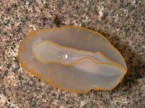
underside
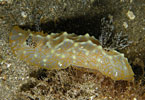
side
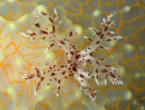
branchia

rhinophores
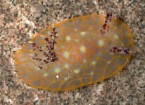
young, 12 mm
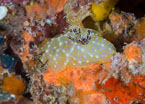
on food sponge?

mating

with egg mass
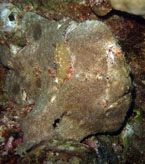
on frogfish
_______________
GALLERY

|
Halgerda terramtuentis (Bertsch & Johnson, 1982)
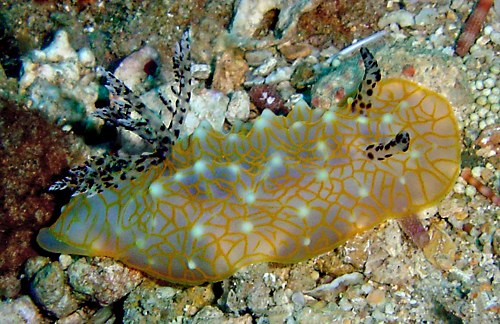
Maximum size: 110-120 mm (seldom over 50 mm).
Identification:
This
species
is
translucent
white with pale-yellow
tubercles on its notum connected by low ridges and a network of
yellow-orange lines. Thin, yellow-orange lines edge both the mantle
margin and the foot. The
rhinophores and gills are translucent white densely spotted with
black.
Natural history:
Halgerda terramtuentis
is a common, diurnal
species found in rocky areas and on shaded cavern walls. Rarely it is
seen crossing open sand. It occurs at
moderately exposed to highly exposed sites at depths of 1.5-43 m (5-140
ft). It may feed on a light orange sponge and it lays a bright yellow egg mass.
Distribution:
Big Island, Maui, Lanai, Oahu, Kauai, Niihau and French Frigate Shoals (also Johnston Atoll).
Taxonomic notes:
This
is
the
species
listed as Halgerda
cf. graphica Basedow and
Hedley, 1905 in Kay, 1979 as well as Kay & Young, 1969. It's also listed as Halgerda
sp. in Bertsch and Johnson, 1981. Its name means "looking at the earth
with care," in recognition of the Earthwatch Institution volunteers who
helped Bertsch and Johnson with field research on Oahu. It is referred
to as the "gold lace nudibranch" in Hoover, 1998 & 2006; the "gold
lace sea slug" in Hoover, 1997 and the "Earthwatch nudibranch" in
Bertsch and Johnson, 1981. It was
first reported in Hawaii from Ala Moana, Oahu in Feb., 1962 (Kay &
Young, 1969).
Photo: PF:
Makena, Maui: Feb. 28, 2008.
Observations and comments:
Note
1: ( )
|
|










